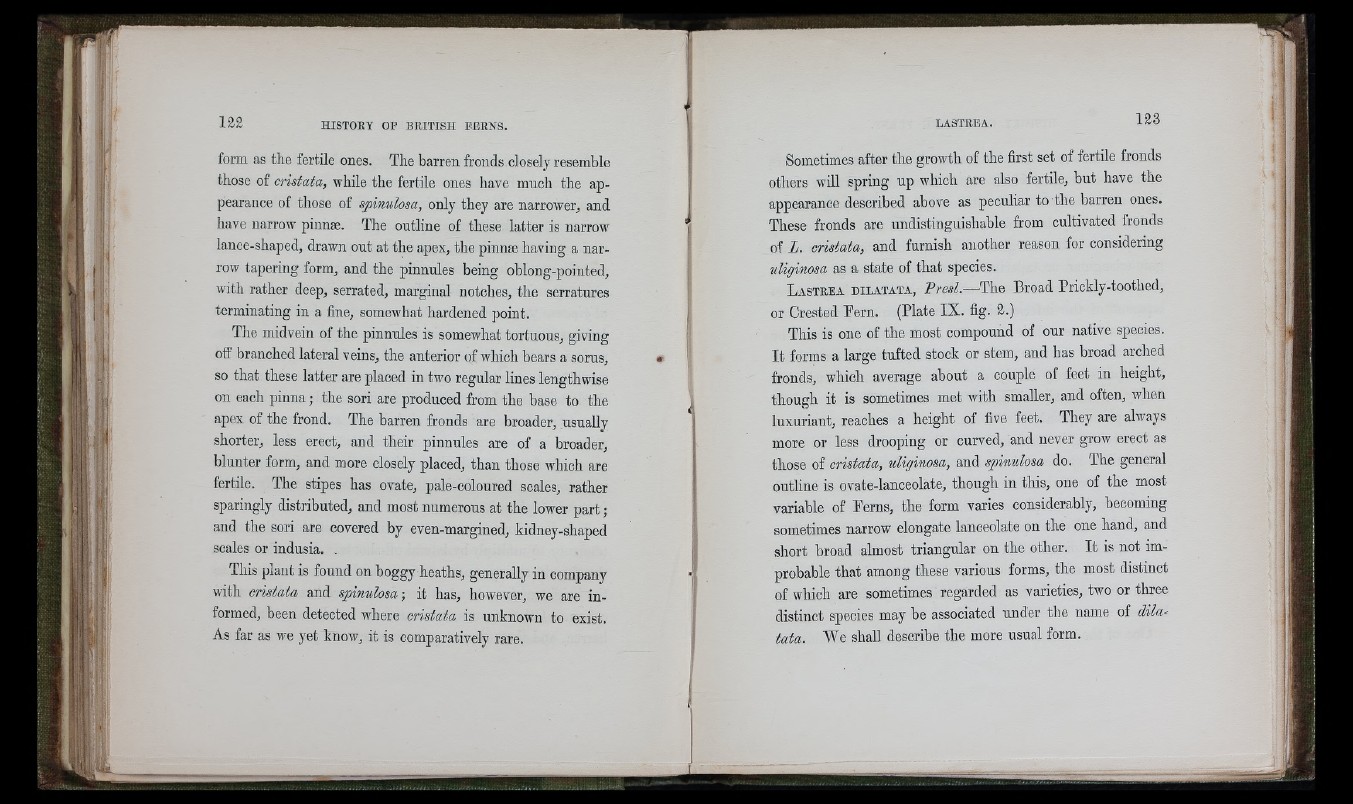
ii!
form as the fertile ones. The barren fronds closely resemble
those of cristata, while the fertile ones have much the appearance
of those of spinulosa, only they are narrower, and
have narrow pinnæ. The outline of these latter is narrow
lance-shaped, drawn out at the apex, the pinnæ having a narrow
tapering form, and the pinnules being oblong-pointed,
with rather deep, serrated, marginal notches, the serratures
terminating in a fine, somewhat hardened point.
The midvein of the pinnules is somewhat tortuous, giving
off branched lateral veins, the anterior of which bears a sorus,
so that these latter are placed in two regular lines lengthwise
on each pinna ; the sori are produced from the base to the
apex of the frond. The barren fronds are broader, usually
shorter, less erect, and their pinnules are of a broader,
blunter form, and more closely placed, than those which are
fertile. The stipes has ovate, pale-coloured scales, rather
sparingly distributed, and most numerous at the lower part ;
and the sori are covered by even-margined, kidney-shaped
scales or indusia. .
This plant is found on boggy heaths, generally in company
with cristata and spinulosa-, it has, however, we are informed,
been detected where cristata is unknown to exist.
As far as we yet know, it is comparatively rare.
Sometimes after the growth of the first set of fertile fronds
others will spring up which are also fertile, but have the
appearance described above as peculiar to the barren ones.
These fronds are undistinguishable from cultivated fronds
of L. cristata, and furnish another reason for considering
uliginosa as a state of that species.
L a st r ea d il a t a t a , Presl.— The Broad Prickly-toothed,
or Crested Pern. (Plate IX. fig. 2.)
This is one of the most compound of our native species.
I t forms a large tufted stock or stem, and has broad arched
fronds, which average about a couple of feet in height,
though it is sometimes met with smaller, and often, when
luxuriant, reaches a height of five feet. They are always
more or less drooping or curved, and never grow erect as
those of cristata, uliginosa, and spinulosa do. The general
outline is ovate-lanceolate, though in this, one of the most
variable of Perns, the form varies considerably, becoming
sometimes narrow elongate lanceolate on the one hand, and
short broad almost triangular on the other. It is not improbable
that among these various forms, the most distinct
of which are sometimes regarded as varieties, two or three
distinct species may be associated under the name of dilatata.
We shall describe the more usual form.